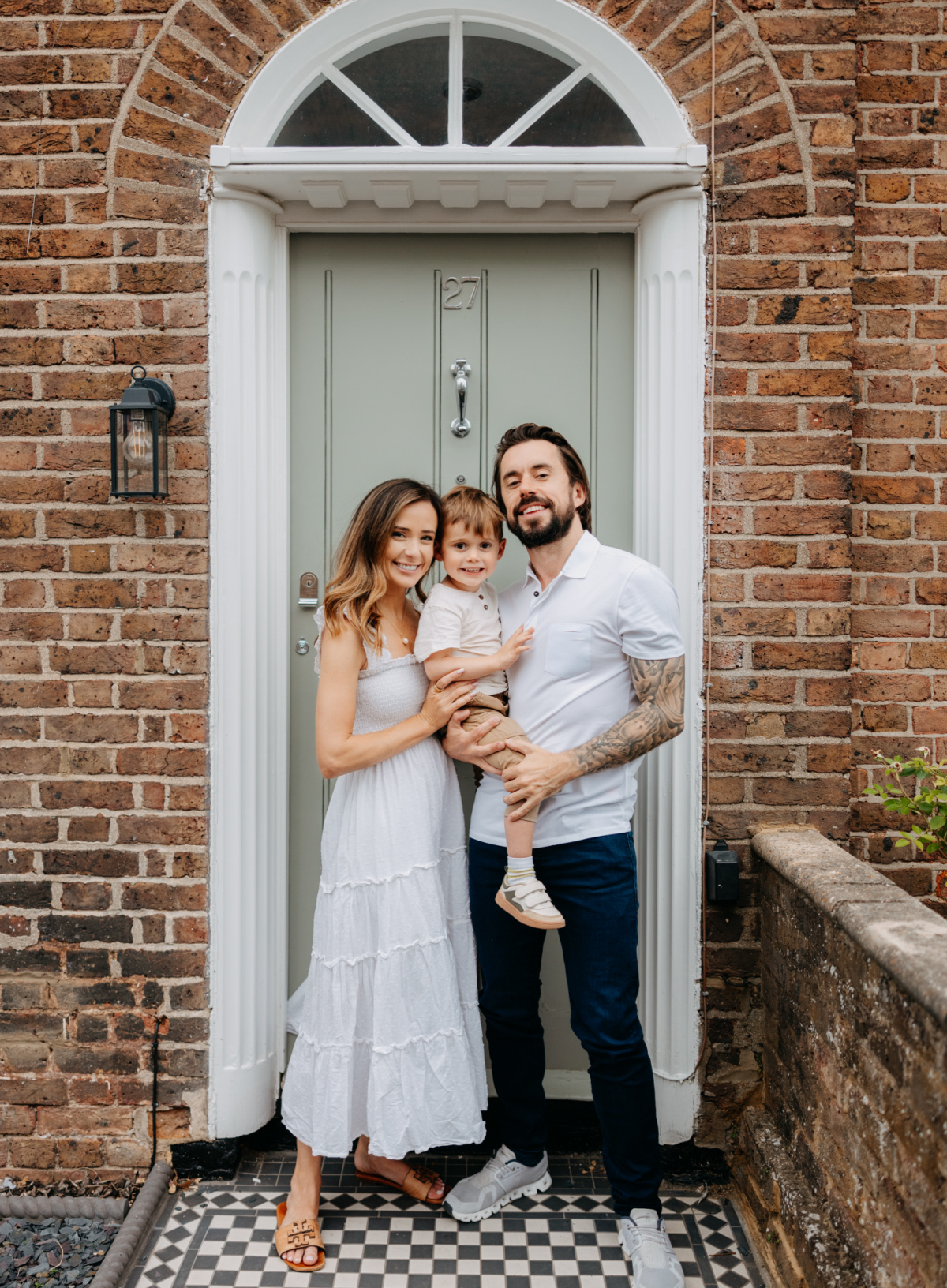



Cartagena far exceeded the expectations that I had for this dreamy place. I truly could not have asked for a more wonderful place to spend my birthday. However, as with any new place you go to, there are tons of questions that you have to find the answers to before your trip! We’re all busy so I thought I’d make that task a little easier for you if you’re wanting to plan a trip to Cartagena. In today’s post, I aim to answer a lot of the questions y’all had in regard to this destination and share some information that I think would be helpful to know before you go!
Know Before You Go

LEGAL VISITATION REQUIREMENTS | There was no need for a VISA but you do need proof of a return ticket to the States and a valid U.S. passport. No vaccinations are required unless you are traveling into the country from Brazil, Angola, Democratic Republic of Congo, and Uganda. You will need to have the Yellow Fever vaccine administered at least 10 days before arrival in Colombia.

GETTING THERE | Cartagena has become quite the hotspot over the last five years and there are plenty of major airlines that have flights from Atlanta, Miami, Fort Lauderdale and New York directly to Cartagena. I flew Spirit Airlines and will be sharing my experience in an upcoming post so stay tuned for that! There are other airlines like American, Jet Blue and Avianca that you can consider if you’d prefer to not fly a budget airline.
CLOSEST AIRPORT | Cartagena has its own airport called Rafael Núñez International Airport that you would fly directly into.
LANGUAGE | People in Cartagena speak Spanish and the city has only just recently seen a strong interest from U.S. travelers, specifically. With that said, there are not a lot of locals who speak English. There are many popular restaurants’ who have adapted their menu’s to be both Spanish and English but, it would be very wise to brush up on key phrases and words while also keeping your Google Translate app handy. One phrase I’d recommend in particular is “Lo siento. No hablo mucho español.” ** If you speak Spanish, please let me know if there is a more appropriate way to say this as I am certainly not the best with foreign languages, but I try my best, which always seems to be appreciated. **
 CURRENCY | In Colombia, you will be using the Colombian peso. Generally speaking, Colombia is very affordable for most Americans! One thousand [$1,000] Colombian peso equates to $0.323 American dollars – oh heyyyyy 3-to-1 exchange rate! This is just one of many reasons to love your trip to Cartagena. I will say, though, you may feel like you’re spending a lot of money at first because their bills are in the thousands and tens of thousands. And, on some of their bills, you’ll see that it says 10 Mil Pesos or 50 Mil Pesos. It’s important to note that the ‘mil’ does not stand for ‘million’ so don’t let that confuse you. It means 10,000 pesos [$3.20 USD] or 50,000 pesos [$16 USD]. I know, it doesn’t make sense to me either but that’s why I felt it necessary to point out! Most restaurants accept credit cards but street vendors and taxi’s are cash only. Only use ATM’s located in bank’s, the airport or your hotel.
CURRENCY | In Colombia, you will be using the Colombian peso. Generally speaking, Colombia is very affordable for most Americans! One thousand [$1,000] Colombian peso equates to $0.323 American dollars – oh heyyyyy 3-to-1 exchange rate! This is just one of many reasons to love your trip to Cartagena. I will say, though, you may feel like you’re spending a lot of money at first because their bills are in the thousands and tens of thousands. And, on some of their bills, you’ll see that it says 10 Mil Pesos or 50 Mil Pesos. It’s important to note that the ‘mil’ does not stand for ‘million’ so don’t let that confuse you. It means 10,000 pesos [$3.20 USD] or 50,000 pesos [$16 USD]. I know, it doesn’t make sense to me either but that’s why I felt it necessary to point out! Most restaurants accept credit cards but street vendors and taxi’s are cash only. Only use ATM’s located in bank’s, the airport or your hotel.
I recommend downloading and using My Currency Converter Pro App. It’s only $0.99 and makes converting currency while traveling to another country a breeze! The app is really easy and straight-forward.
TIPPING CULTURE | Every culture is different, so here’s what I learned about tipping in Cartagena – and Colombia, in general. If you are Colombian, and want to weigh in, please do! I’m certainly not an expert but this was what I was told:

• Taxi’s – No tip!
• Restaurant Servers – There will typically be a 10% voluntary tip automatically included on your bill [called the ‘propina voluntaria‘]. You are not required to pay it but everyone does and it goes into a pot to split between the servers at the end of the night. You can, of course, leave a little more if you feel so inclined but it’s not expected.
• Tour Guides – Tipping a guide is customary but the amount is completely up to you!
• Airport Baggage Handlers – Tip, but can be a very small tip around 500 Colombian pesos, which is essentially 17 cents. The trouble is, most people aren’t going to have change readily available. We asked ours to show us where the nearest ATM was so we could get money and tipped him 10,000 Colombian pesos, which is around $3.
• Hotel Porters, Maids & Concierge – Tip anywhere between $2,000 and $5,000 Colombian pesos [$0.60 – $1.62 American dollars] and, with porters, you tip per event, not per bag!
GETTING AROUND | If you’re staying in the Old City, which included Getsemani, you will have no problem getting from place to place by foot. It’s very walkable, which I love. However, if you need a ride somewhere, taxi’s are plentiful around the city but I would be careful hopping in one right off the street. Your hotel can call one for you if you know ahead of time you’ll need a taxi. They will know it’s a legit taxi, will be able to communicate where you’re trying to go, etc. We only used taxi’s three times and felt like the prices were very fair [to the airport, we paid $20,000 COP = $6.50 USD] but, make sure you negotiate price ahead of time and bring cash. They are cash only so be sure to get cash out at the airport. Uber is also available, if needed.

BEST TIME TO VISIT | The best time to visit Cartagena, and a majority of the county of Colombia, is December to March because it holds the mildest temperatures and it rains the least. Afternoon downpours are common from May to November. The great thing about Cartagena, though, is that temperatures stay hot year around but the temperatures stay about the same with high’s in the high 80’s and low’s in the mid-70’s.
 STREET FOOD | If you’re a fan of the Real Housewives of New York, you have heard the warnings about consuming the street food. Since it can get pretty toasty during the middle of the day, I will say I was tempted a few times to buy street food. However, I was too afraid so, sadly, I can’t bust any myths for you here. You can watch the fruit vendors cut everything up making you think it’s super fresh. It definitely looks it but my question is how clean is the knife they cut it with? While I want to support the Colombian people, because they are all so kind, I was a little hesitant with doing so in this regard. I did, however, buy fruit that wasn’t cut and it was delicious!
STREET FOOD | If you’re a fan of the Real Housewives of New York, you have heard the warnings about consuming the street food. Since it can get pretty toasty during the middle of the day, I will say I was tempted a few times to buy street food. However, I was too afraid so, sadly, I can’t bust any myths for you here. You can watch the fruit vendors cut everything up making you think it’s super fresh. It definitely looks it but my question is how clean is the knife they cut it with? While I want to support the Colombian people, because they are all so kind, I was a little hesitant with doing so in this regard. I did, however, buy fruit that wasn’t cut and it was delicious!
LENGTH OF STAY | The area within the walled city is very small. You could easily tackle it in a couple of days taking into account stops for picture taking, meals, drinks, shopping, etc. I’d recommend giving yourself a couple more days outside of that to potentially book a beach or boating experience and / or taking it a little slower one day. I’d say give yourself 4 days at least but, I’d argue that by the end you will wish you had a couple more. We were there for a week and could have easily kept ourselves busy for a couple more days.
If you’re based in Florida, or the Southeast, and it’s pretty easy and affordable to get here, then I think a long weekend would be good considering coming back another time would be pretty feasible but, if you’re traveling a ways, you might as well give yourself some extra time here as it’d be more cost effective to get the most out of this one trip than to come back again – not that there’s anything wrong with serial trips to Cartagena, but I think you know what I mean!

SAFETY | As a traveler, it’s important to understand the safety risk involved with the destination you are venturing to before making set plans. To do this, I always look at the U.S. Department of State website. When the country reaches a Level 4, the United States highly suggests Americans do not travel there. As of 2018, Colombia ranks at a Level 2 warranting travelers to exercise increased caution. There are some areas in which the government has encouraged American’s do not travel to which is outlined under the ‘Travel Advisory’ by clicking READ MORE. Personally, I’d put Bogota [pronounced Bo-guh-tah] on the back-burner at this time due to the terrorist activity that is outlined to have occurred just this year.

Personally, during my experience in Cartagena, which is just a small bit of the country of Colombia, I did not fear for my life and found most individuals to be extremely kind and helpful. It is widely considered a very safe city. However, it is important to remember, when traveling here, that this is a country whose socioeconomic status looks much different than ours in America. You will see poverty. You may see prostitution, specifically in Plaza de Los Coches [although, we wouldn’t have realized it if our taxi driver hadn’t told us that’s what goes on in the square at night]. You will experience people trying to sell you items like water, candy, headbands, hats, and the like during the day. You will see mothers with small children trying to sell you candy to support her family. While this can all be seen to people as sad, disconcerting, annoying or fill-in-the-blank, I found that a very kindly stated ‘no, gracias, por favor’ with a smile goes a long way. Don’t treat them as if they are annoying. They are humans trying to make a means to live. Does it look different than how you make a living for yourself? Yes. And that’s okay. Treat them with respect and kindness. Support them if you feel lead but, remember, you are a visitor in their country. It IS important that you represent our country well and you treat the people of other countries well. They don’t have to let us in.

The thing to remember, when it comes to travel, is there are bad people everywhere. Bad things can happen anywhere but just because things look different than your normal doesn’t mean that it’s not safe. Do your best to be aware of where to stay and where you should and shouldn’t venture to, especially at night. Stay vigilant and aware. Travel in groups, if possible, and don’t cause a scene or bring about unnecessary attention to yourself or your group. Keep your bags in front of you and keep them zipped. Don’t allow yourself to become obviously distracted by staring down at your phone. Drink in moderation. And, most importantly, do not let the fear of being somewhere unfamiliar to you or being around people who look different than you rob you of the chance to grow and experience new places, people and cultures. More often than not, you’ll experience many more good people than you will bad people.
Also, if you associate Colombia with Pablo Escobar, cocaine, and the Medellin Drug Cartel, I totally understand why. He is still considered the most elusive drug trafficker to ever have existed. However, this cartel is no longer active, Escobar was killed in 1993 and, while it’s very likely that cocaine exists in Colombia, there are no large active cartels in Colombia at this time.
 IN CASE OF AN EMERGENCY | As a traveler, you should familiarize yourself with what to do in case of an emergency because, while Whitney and I felt completely safe, no one can guarantee your experience will be the same. Please be aware of the following information in case of an emergency:
IN CASE OF AN EMERGENCY | As a traveler, you should familiarize yourself with what to do in case of an emergency because, while Whitney and I felt completely safe, no one can guarantee your experience will be the same. Please be aware of the following information in case of an emergency:
- Report crimes to the local police at 123 and contact the U.S. Embassy at +57 (1) 275-2000 or +57(1)275-4021 after hours. Remember that local authorities are responsible for investigating and prosecuting crimes.
- Enroll in the Smart Traveler Enrollment Program (STEP) to receive security messages and make it easier to locate you in an emergency.
- Call us in Washington at 1-888-407-4747 toll-free in the United States and Canada or 1-202-501-4444 from other countries from 8:00 a.m. to 8:00 p.m. Eastern Standard Time, Monday through Friday (except U.S. federal holidays).
- You are subject to local laws. If you violate local laws, even unknowingly, you may be expelled, arrested, or imprisoned.

WHAT YOU DON’T SEE IN PHOTOS | To be honest, I found myself to have let the beautiful photos that I had seen of Cartagena somewhat blind me to the fact that Colombia is still developing in many ways. The three most popular cities in the country are Cartagena, Bogota and Medellin. These are where tourists spend most of their time and you’ll find most restaurants, shops, infrastructures, etc. to be in line with what you see in America. However, you will see and experience things like a lack of trash bins around the city so there is trash in the streets and sidewalks. The sidewalks are also small and the quality isn’t the best. The streets are noisy and the cabbies exercise an irrational use of their horn. You’ll smell some unfavorable scents walking through certain areas thanks to all of the horse drawn carriages. You’ll see people who are clearly very poor and families sitting on the side of buildings begging with their children in their laps. So, just know that while the photos you see are beautiful, colorful and interesting, you may see things that are hard and that’s sometimes just the reality of venturing to other countries. Do what you can to not let it stifle your experience and opinion of the place as well as support the economy in ways that make sense to you!
If I missed anything that you need help with in preparing for your trip, please don’t hesitate to leave it in a comment below and I can make additions to the post! More than anything, I hope you have an amazing time in this beautiful place!
If you’re new to following me, and want outfit details, you can get most of them in THIS blog post. xo.









